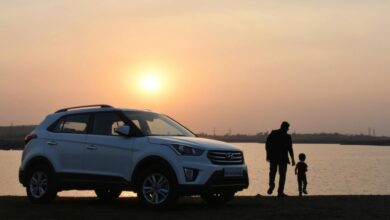What is Uninsured Motorist Coverage? A Comprehensive Guide

Driving on the road can be unpredictable. Despite strict laws and regulations, not every driver carries the necessary insurance to protect themselves or others in the event of an accident. This is where Uninsured Motorist Coverage (UMC) comes into play—a critical yet often overlooked component of auto insurance policies. In this article, we’ll delve deep into what uninsured motorist coverage is, why it’s important, how it works, and whether you should consider adding it to your policy.
Understanding Uninsured Motorist Coverage
What Exactly Is Uninsured Motorist Coverage?
Uninsured Motorist Coverage (UMC) is a type of car insurance that protects you if you’re involved in an accident with a driver who either has no insurance or insufficient insurance to cover the damages they caused. It essentially acts as a safety net when the at-fault driver cannot financially compensate for injuries or property damage resulting from the collision.
There are two primary types of uninsured motorist coverage:
- Uninsured Motorist Bodily Injury (UMBI):
This covers medical expenses, lost wages, and other costs related to injuries sustained in an accident caused by an uninsured driver. It ensures that you and your passengers receive financial support even if the responsible party lacks coverage. - Uninsured Motorist Property Damage (UMPD):
This reimburses you for damage to your vehicle or personal property caused by an uninsured driver. However, UMPD typically has lower limits compared to collision coverage, so many drivers opt for additional protection.
Why Is Uninsured Motorist Coverage Important?
The Prevalence of Uninsured Drivers
Despite mandatory insurance laws in most states, millions of drivers hit the road without proper coverage. According to data from the Insurance Research Council (IRC), approximately 12-13% of drivers nationwide are uninsured. That means one out of every eight vehicles you encounter could potentially leave you vulnerable in the aftermath of an accident.
Even more alarming is the rise in underinsured motorists—drivers whose liability limits are too low to fully cover the costs of a serious accident. Without uninsured motorist coverage, you may find yourself footing the bill for medical bills, repairs, and other expenses.
Protecting Yourself Financially
Accidents can happen anywhere, anytime. If you’re struck by an uninsured driver, their inability to pay doesn’t absolve you of the financial burden. Medical treatments alone can quickly escalate into tens of thousands of dollars, not to mention potential income loss if injuries prevent you from working. Uninsured motorist coverage bridges this gap, ensuring that you’re not left holding the bag.
Moreover, uninsured motorist coverage extends beyond just collisions with uninsured drivers. It also applies in scenarios such as:
- Hit-and-run accidents: When the offending driver flees the scene and cannot be identified.
- Stolen vehicles: If your car is damaged while being operated by a thief who lacks insurance.
- Underinsured motorists: When the at-fault driver’s policy isn’t enough to cover all your losses.
How Does Uninsured Motorist Coverage Work?
When you purchase uninsured motorist coverage, you select specific limits based on your needs and budget. These limits determine the maximum amount your insurer will pay per person, per accident, or for property damage.
Here’s a step-by-step breakdown of how UMC works:
- Filing a Claim: After an accident involving an uninsured or underinsured driver, you file a claim with your own insurance company instead of pursuing compensation from the at-fault driver.
- Investigation Process: Your insurer investigates the incident to confirm that the other driver was indeed uninsured or underinsured and that they were at fault.
- Payout Determination: Once liability is established, your insurer pays for eligible expenses up to the limits specified in your policy. For example, if your UMBI limit is $50,000 per person and $100,000 per accident, those amounts cap what your insurer will cover.
- Deductibles and Reimbursements: Depending on your policy terms, you might need to pay a deductible before receiving reimbursement for certain costs like property damage.
Benefits of Adding Uninsured Motorist Coverage
Peace of Mind
Knowing that you have a layer of protection against irresponsible or non-compliant drivers provides immense peace of mind. You won’t have to worry about unexpected financial hardships stemming from someone else’s negligence.
Affordable Premiums
Surprisingly, uninsured motorist coverage is relatively inexpensive compared to other forms of auto insurance. Many insurers offer it as an add-on for just a few extra dollars per month, making it a cost-effective way to enhance your overall protection.
Broader Protection
In addition to covering accidents with uninsured drivers, some policies include provisions for underinsured motorists. This dual functionality makes UMC a versatile tool for safeguarding your finances.
Drawbacks and Limitations
While uninsured motorist coverage offers significant advantages, it’s essential to understand its limitations:
- Coverage Caps: Like any insurance product, UMC has predefined limits. If your medical bills or repair costs exceed these caps, you’ll still bear the remaining balance.
- Exclusions: Certain situations, such as intentional acts or accidents occurring outside designated areas, may not qualify for coverage.
- State Requirements: Not all states require uninsured motorist coverage. Some allow drivers to reject it outright, which could lead to gaps in protection if you’re unaware of local regulations.
Is Uninsured Motorist Coverage Worth It?
Deciding whether to invest in uninsured motorist coverage depends on several factors, including your location, driving habits, and existing insurance portfolio. Here are some key considerations:
Who Should Consider UMC?
- Residents of High-Uninsured-Driver States: If you live in a state with a high percentage of uninsured drivers, UMC becomes especially valuable.
- Individuals Without Health Insurance: Without robust health coverage, UMBI can serve as a crucial lifeline for medical expenses.
- Drivers With Older Vehicles: If your car is older and lacks comprehensive/collision coverage, UMPD can help offset repair costs.
Alternatives to UMC
If uninsured motorist coverage isn’t right for you, there are alternative ways to mitigate risks:
- Personal Injury Protection (PIP): Available in no-fault states, PIP covers medical expenses regardless of who caused the accident.
- Collision Coverage: While pricier than UMPD, collision coverage provides broader protection for vehicle damage.
- Emergency Fund: Building a financial cushion can help absorb unexpected costs, though it won’t replace the convenience of insurance.




